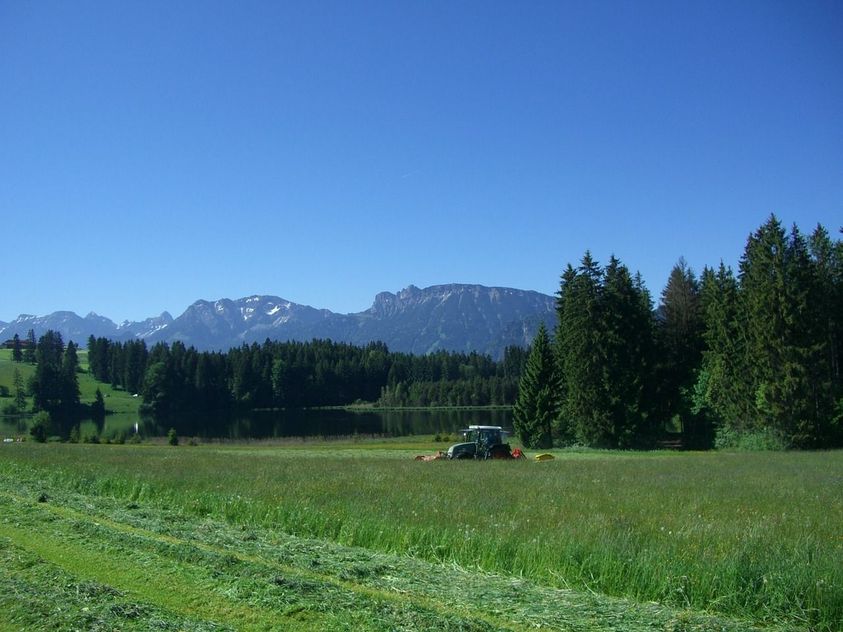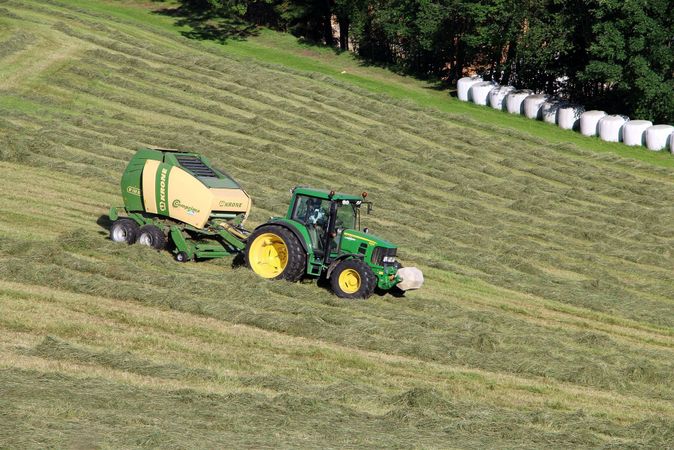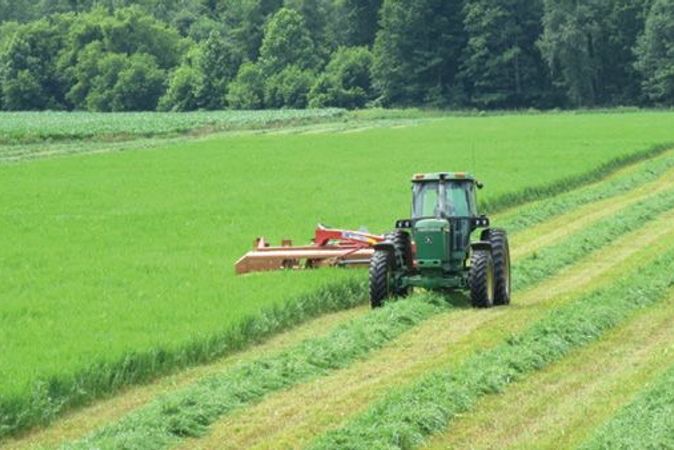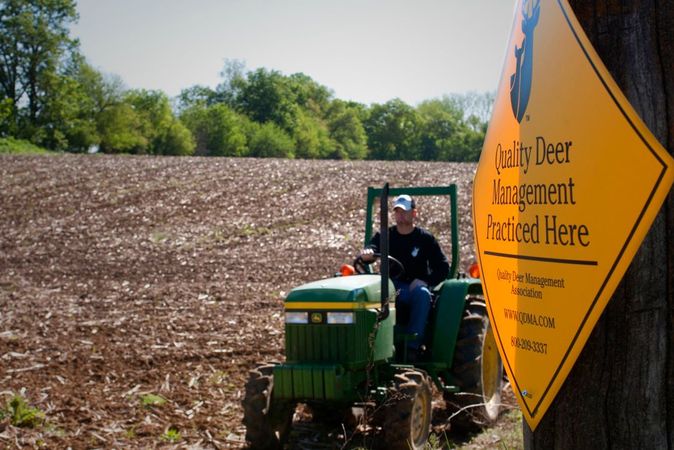It’s the time of year to start cutting hay. We’ve all heard stories from farmers who have accidentally run over a nest of turkey eggs or have clipped the leg of a scared fawn. Obviously, this is something they would rather not have to go through again. We know accidents happen, but these measures will help you reduce the loss of life while cutting your hay this summer.
Walk Your Fields
In the weeks leading up to your first hay cutting, take the time to walk your fields. Not only is this a good way to get some exercise in, but it’s also a way for you to find any hens sitting on their nests or does hiding their fawns. It might be tempting to do this quietly and casually; who doesn’t want to take a peaceful walk in their fields, but this won’t help you find any nests or hiding areas. Instead, walk in a zigzag making as much noise as possible. This is likely to spook any does who will bolt to distract you from their fawns. Unfortunately for hens, they are known to sit on their nest until death, but you may just get lucky and stumble upon her when walking.
After you’ve found the nest or hiding area, use a tobacco stake wrapped in bright orange tape to mark the area. Be careful not to disturb the nest or touch any of the eggs if the hen happens to not be around. The bright orange will help you spot the nest when mowing and will allow you to mow around it. As for deer, if you find the area where the doe is keeping her fawns, you can also mark it with a stake, but try your best to run them out of the field. Fawns are known to run in the way of the mower which can spell disaster. There’s no need to worry if their mama will find them outside of the field. Deer, even the little ones, communicate well and the doe will be able to find them.
Delay the First Cutting
A great way to help improve wildlife survival is to delay the first cutting. By delaying until the end of July, the majority of nesting activity is complete, minimizing or even eliminating the mortality of nesting birds. We understand this isn’t always practical for farmers because of the increased maturity of the alfalfa, but delaying even a couple of weeks will still help save the lives of nesting birds and their eggs.
Start At the Center
More often than not, the edges of fields are where hens like to nest and does prefer to bed. For your first cutting, only cut the center, leaving the edges untouched. This is a great alternative if you are unable to delay your cuttings. Sure, this might look a little strange, but you're less likely to harm any wildlife. By the time of your second cutting, the nests should be empty and the does and fawns will have moved on.
Other Measures You Can Take
Raise the height of your mower to at least 3 inches. The higher the cut, the lower the mortality rate for nesting hens and any crouching animals. Also, try to wait longer in between your cuttings. A longer wait between the first and second cuttings can assist in saving the lives of ground-nesting wildlife. Lastly, in the unmowed areas of your property, encourage a native habitat. Plant wildflowers, grasses, native trees and shrubs. This will hopefully drive some of the animals and birds to that area.
There are plenty of factors to impede upon the well being of wildlife. As conservationist farmers, we can at least try to keep from knocking down the population. It really is a good feeling to know you have avoided the unnecessary loss of life, especially when you’ve put in the extra effort.







